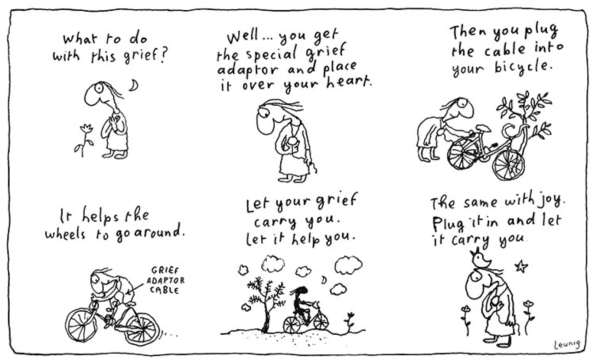Mindfulness: “feeling” and “dealing” with our emotions
23 April 2024
“One of the mighty illusions that is constructed in the dailyness of life in our culture is that all pain is a negation of worthiness, that the real chosen people, the real worthy people, are the people that are most free from pain.”
(bell hooks, professor, feminist and social activist)
We have a strange view in our culture of stress and distress. Rather than being something acceptable and necessary and an ordinary part of being a healthy person, it has become something abject, shameful and to be avoided. We imagine lives where we could construct an image of ourselves in which within our activities, work, relationships we appear calm, confident, successful, flourishing, and charming at all times.
This is not true! And not only does this affect the level of connection and intimacy we feel with others, it also makes for some mighty struggles and battles within.
Emotions as signals
Mindfulness meditation offers a space and place in which to feel the real. To be able to tolerate and name our signals (emotions) of stress and distress is a strength. Mindfulness practice also helps us not only feel our feelings, but also deal with them. We can start to digest and process them without being overwhelmed by them or being so afraid of them that we have to supress or repress them.
Mindfulness meditation builds a confidence that we can know our experience directly, and that this knowing , this awareness, helps. To recognise and allow our experience and also investigate it, is powerful. Slowly something that we were subject to, flooded by, can be recognised as phenomena passing through. We can “de-centre”, separate a little from it, get perspective on it and offer it our curiosity and interest. Even our kindness towards this part of ourselves can arise.
Avoiding the unpleasant
We are hardwired to want to move away from anything unpleasant. When this is something outside us – eg. food that is toxic, or a car approaching on a road - it works well. But when it is an internal experience – an emotion, or body sensation or thought – our aversion sets up a battle inside and self-attack is likely to begin.
Building a home-base
We all hunger for a space and place in which we can find ourselves at home. Home is a place where we perhaps don’t have to hide, or protect ourselves from knowing ourselves. Mindfulness practice can help us build this internal space, this home-base where we can undermine our reactivity to internal experience. The group experience can also be a surprisingly profound experience of community.
Find out more about the Mindfulness Based Stress Reduction Course

Timothea Goddard
Director
Australian Centre for Mindfulness

